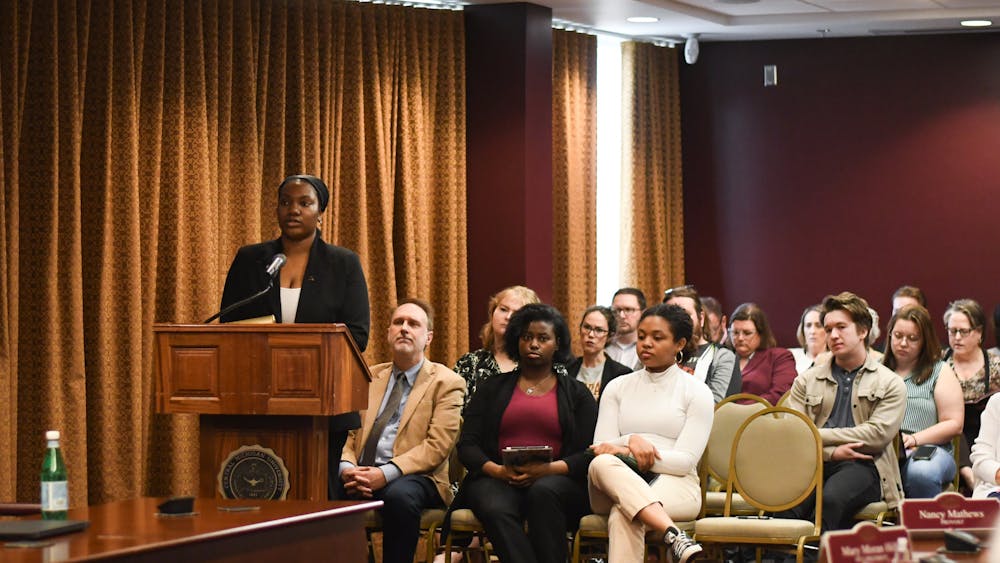STEM fields to recruit even younger to combat "brain drain"

Boasting an undergraduate engineering program among the nation’s top 100 and a developing state-of-the-art $95 million Biosciences Building, Central Michigan University’s programs in science, technology, engineering and mathematics fields lead the way in education and enrollment.
A university press release Tuesday revealed that despite CMU’s own success, STEM programs nationwide are suffering.
“The U.S. Department of Commerce estimates that jobs in STEM areas will grow 17 percent by 2018, nearly double the growth for non-STEM fields,” reads the press release. “Most will remain vacant because there will not be enough qualified workers to fill them.”
In an effort to combat this, presidents from regional colleges like Alma, Saginaw Valley State University, Delta College, Mid-Michigan Community College and Northwood University were called to Mount Pleasant on Thursday to attend the STEM Impact Initiative Summit. President George E. Ross spoke for CMU on the panel in McGuirk Arena.
Ross weighed in on the lack of diversity within STEM fields and how to encourage the integration of women and individuals of color into the fold.
“We do know that 75 percent of enrolled students in college around this region are either female or students of color, but they’re only filling 45 percent of those STEM jobs,” Ross said. “We’re addressing that here at CMU.”
Ross went on to say that over the next six to 10 years, STEM careers will outgrow other careers and that individuals within the STEM and art fields will make 26-30 percent more than non-STEM graduates. He also non-STEM jobs will still require STEM related teachings, such as mathematics and technology.
“It’s not just what our students learn here at CMU – they learn a lot,” Ross said. “It’s what they do with that knowledge and learning. Our students leave CMU with internships, getting ready to leave here to go into those permanent positions.”
Internships he listed include those offered by Dow Corning and Dow Chemical.
Accessible education was also a topic discussion by many of the president. Dr. Christine Hammond, president of Mid-Michigan Community College, said in 2012, 46 percent of students who earned a STEM bachelor’s or master’s degree will have earned a portion of these credits at a community college.
“Educational access and the convenience of community college are vital factors for people in our region in keeping the doors open for those who want to remain in their home communities, their home state,” she said. “(Roughly) 90 percent of the U.S. population lives within 25 miles of a community college. Study at a community college can help us to stem, yes pun intended, the brain drain.”
Ross echoed the sentiment, believing that it was necessary to start even earlier than high school and college in order to recruit students into STEM fields.
“We have to get students ready before they get to the universities or the college, we’re talking earlier – preschool, kindergarten, between those ages of zero and eight,” Ross said. “(We have to get them) excited about math, excited about science – frankly excited about learning.”
Dr. Donald Bachand, President of Saginaw Valley State University, honed in on subpar math skills at the middle school level as being one of the reasons why STEM fields are lacking. He said that through working with elementary and middle school level teachers, who deal with large numbers of students on a regular basis, an impact in the STEM field could be made very efficiently.
“The result of the professional development for K12 teachers is rather enormous as these teachers impact hundreds and hundreds of students in academic years,” Bachand said. “(By focusing on STEM early on) we can impact thousands of students in this region very quickly in a very positive way.”
As of the 2013-14 school year, CMU’s College of Science and Technology has “2,176 students signed as STEM disciplines and conferred 645 undergraduate degrees,” according to a university press release as of October 23, 2014. This shows a 23 percent increase in majors and a 38 percent increase in undergraduate degrees over the last five years.




